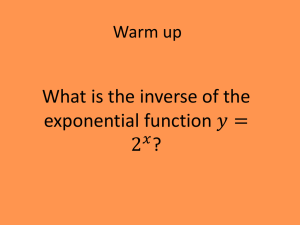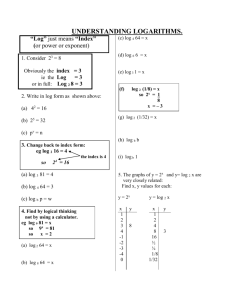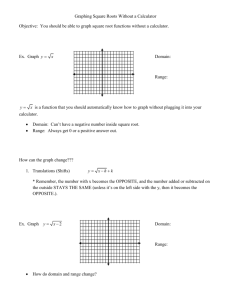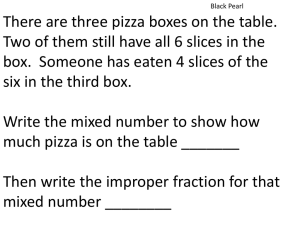Slide 1
advertisement
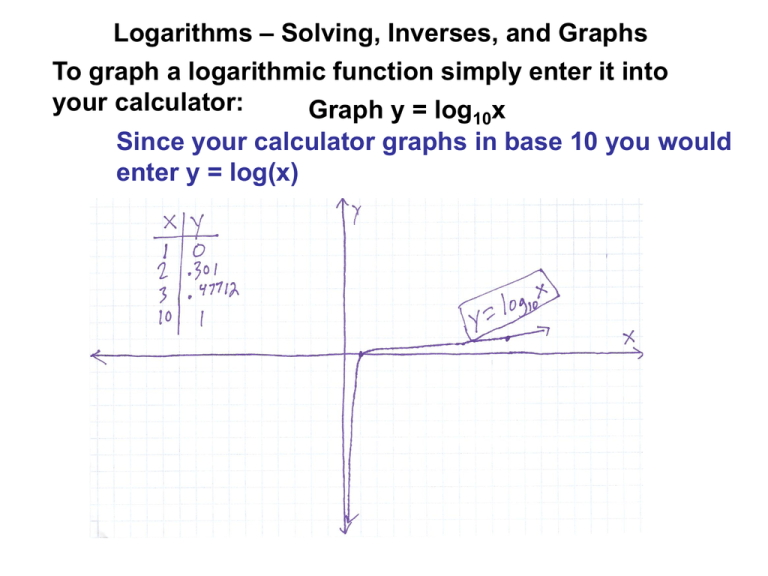
Logarithms – Solving, Inverses, and Graphs To graph a logarithmic function simply enter it into your calculator: Graph y = log10x Since your calculator graphs in base 10 you would enter y = log(x) Graph y = log2x Since this is not in base 10 you need to use the change of base formula that we used to find the logs and enter in: y = (log(x))/(log(2)) Solving a logarithmic function: Remember that your calculator only solves log10 – to solve any other base you must use the change of base formula where logab = (log(b))/(log(a)) Find log1025 Put it into the calculator as log(25) log1025 = 1.398 Find log663 Put it into the calculator as (log(63))/(log(6)) log663 = (log(63))/(log(6)) = 2.312 Logs can also have a negative value – if the answer is a fraction Find log2(1/8) Put it into the calculator as (log(1/8))/(log(2)) log2(1/8) = (log(1/8))/(log(2)) = -3 Remember that you can check any of these answers by plugging them in as exponents and making sure you get the proper answer Check – log1025 = 1.398 101.398 = 25 (or be very close) 25.003 = 25 (very close) Check – log2(1/8) = -3 2-3 = 1/8 (or be very close) 1/8 = 1/8 Logs and Exponential functions are inverses So if you are asked to find the inverse of log2x = y Change it into the exponential form 2y = x Solving a log function for a missing piece log8x = -1 Convert it into its exponential form 8-1 = x Use a calculator or thought to figure out the missing piece 8^(-1) = (1/8) or .125 (using calc) Logx15625 = 6 x6 = 15625 To solve this we need to take the 6th root of each side (x6)^(1/6) = (15625)^(1/6) x=5 Homework for tonight is #39 Problem Set Corrections are due next class: Orange – Tuesday 9th Gray – Monday 8th
